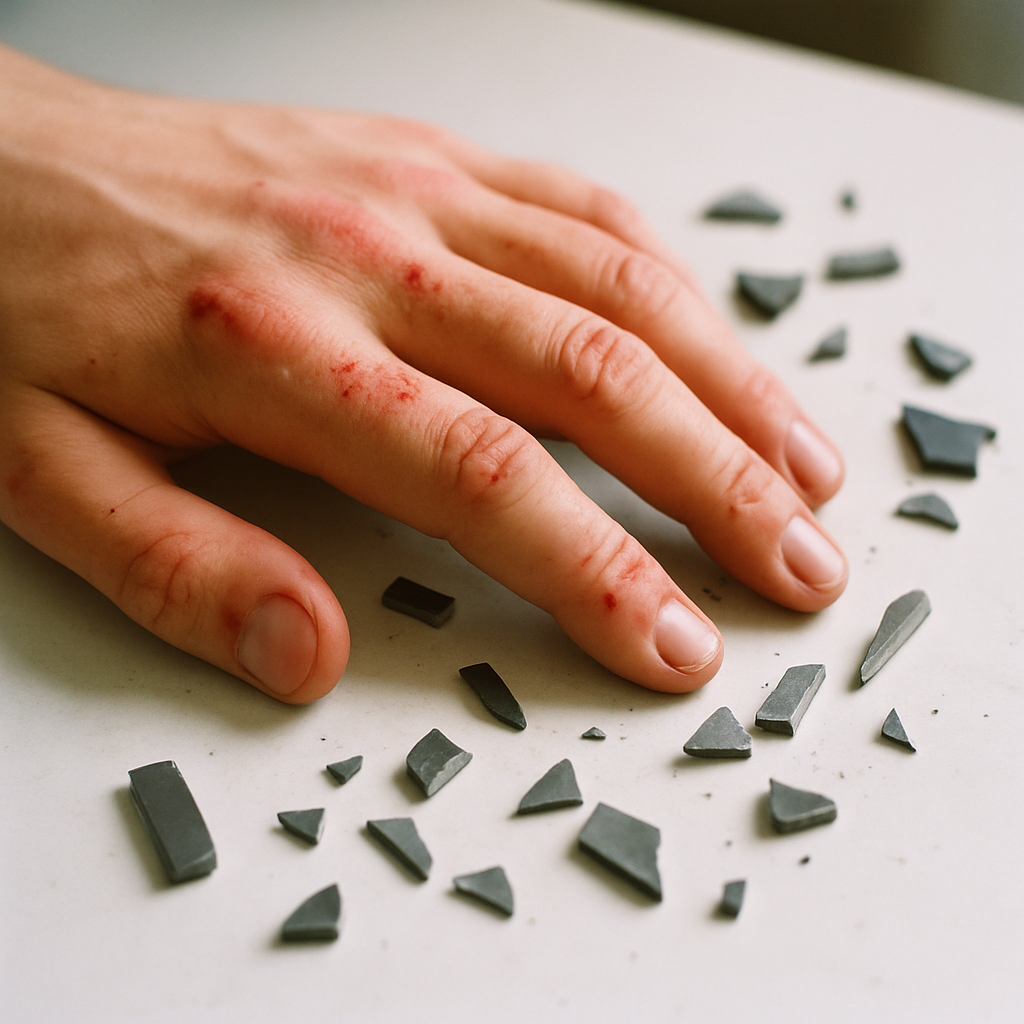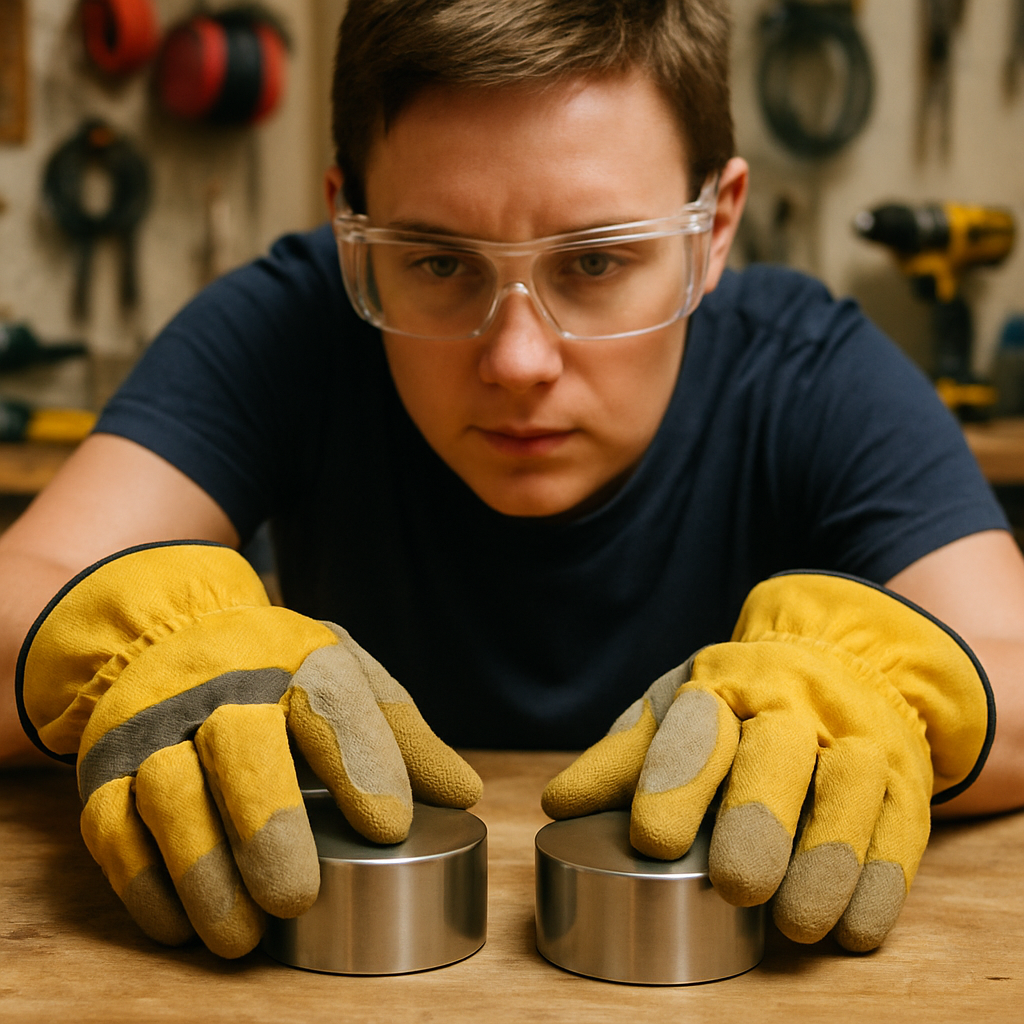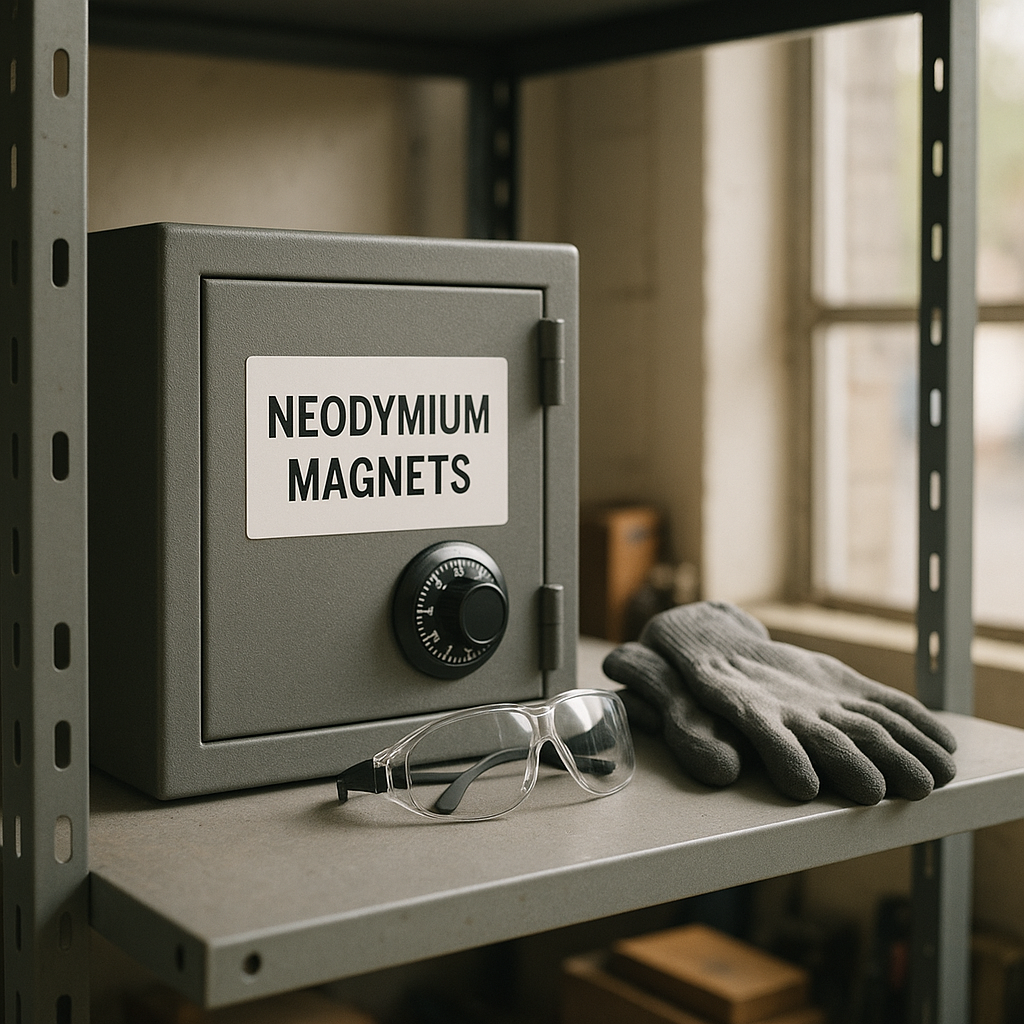5901 Botham Jean Blvd, Dallas, TX 75215
Discover the Risks of Breaking Neodymium Magnets?
July 26, 2025The shattering of a neodymium magnet is more than just a minor mishap—it can be a dangerous event. When these powerful magnets break, they don’t simply crack. They explode into razor-sharp fragments that can fly through the air at high speeds.
Neodymium magnets are exceptionally strong yet inherently brittle. Their ceramic-like structure makes them vulnerable to breaking when dropped, struck, or allowed to slam together uncontrolled. The magnetic force that makes these magnets so useful also poses a significant hazard when they break.
The dangers are immediate and serious. Sharp fragments can launch like tiny projectiles, potentially causing eye injuries or embedding in skin. Even after a break, the jagged edges of neodymium pieces remain dangerously sharp—capable of causing deep cuts similar to broken glass. The remaining fragments still retain their powerful magnetic properties, creating additional risks as they continue to attract other magnetic materials and each other.
What Physical Injuries Can Result from Broken Neodymium Magnets?

Neodymium magnets may seem harmless, but when broken, they pose serious hazards. According to a study by the US Consumer Product Safety Commission, magnet-related emergency department visits increased 8.5-fold from 2002 to 2011, with many cases involving broken magnets. These powerful magnets can cause various injuries when they break or shatter.
Eye Injuries from Flying Fragments
When neodymium magnets break, they can shatter with significant force. These magnets are brittle by nature, and the shards can fly at high speeds. Without proper eye protection, these fragments can cause serious eye injuries, potentially leading to vision impairment or even blindness. Safety experts recommend always wearing protective eyewear when handling multiple neodymium magnets.
Cuts and Lacerations
Broken neodymium magnets create sharp edges and fragments that can easily cut skin. These shards are similar to broken glass in their ability to cause lacerations. The cuts can be deep and may require medical attention, especially if fragments become embedded in the skin.
Pinching and Crushing Injuries
Common injuries occur when fragments of broken magnets rapidly attract each other. If skin gets caught between these powerful fragments, it can result in painful pinching, blood blisters, or severe bruising. Larger magnet pieces can exert enough force to trap fingers and cause significant tissue damage.
Broken Bones and Serious Trauma
Larger neodymium magnets (approximately 30 cm³ or more) possess an attractive force strong enough to break bones if fingers or other body parts are caught between fragments. These magnets can snap together with enough force to crush small bones, particularly in children’s hands.
Ingestion Hazards
The most life-threatening risk comes from ingesting multiple fragments of broken neodymium magnets. If swallowed, these fragments can attract across intestinal walls, causing perforations, blockages, and severe internal damage. Medical professionals report that these magnets can pinch tissue between them, leading to necrosis, fistulas, and potentially fatal complications.
Children are particularly vulnerable to this danger. Multiple hospital reports indicate that when more than one magnet fragment is swallowed, emergency surgery is often required to prevent or repair intestinal damage.
Reducing Risk of Injury
To minimize injury risks when handling neodymium magnets:
- Always wear eye protection when working with magnets that might break
- Use gloves to protect hands from cuts and pinching
- Keep broken magnets away from children
- Store magnetic fragments separately to prevent unexpected attraction
- Dispose of broken magnets properly according to local regulations
If you’re working with neodymium magnets in a recycling context, handling them with proper tools rather than bare hands significantly reduces injury risk.
[[artifact_table]] Types of injuries from broken neodymium magnets and their severity [[/artifact_table]]
How Can You Safely Handle Neodymium Magnets?

Neodymium magnets are extremely powerful and require special handling to prevent injuries and damage. Their strong attractive force can cause serious pinching injuries if not managed properly. Follow these essential safety measures to handle neodymium magnets safely.
Personal Protection
Always wear protective gear when handling neodymium magnets. Safety goggles protect your eyes from fragments if magnets chip or shatter upon collision. Gloves shield your hands from painful pinches that can occur when magnets suddenly attract.
The force between two neodymium magnets can be surprisingly strong. Two attracting magnets can severely pinch skin caught between them, causing injuries similar to being squeezed by pliers.
Proper Handling Techniques
- Slide magnets apart instead of pulling them. When separating magnets, slide them off each other horizontally rather than trying to pull them apart directly. This technique significantly reduces the risk of injury and magnet damage.
- Use non-metallic tools like plastic wedges to separate larger magnets instead of using your hands.
- Keep magnets at a safe distance from each other to prevent unexpected collisions that could cause breakage and flying shards.
Storage Guidelines
Store neodymium magnets in a controlled environment to maintain their strength and prevent accidents. A dry, room-temperature location is ideal, as these magnets are highly susceptible to corrosion in humid environments.
Keep magnets in closed, clean containers and away from sensitive electronics, magnetic media, and medical devices. The strong magnetic field can damage credit cards, hard drives, and pacemakers.
Critical Safety Warnings
- Never drill, cut, or mechanically alter neodymium magnets. The resulting dust is highly flammable and can easily combust.
- Keep magnets away from high temperatures. Exposure to heat above 175°F (80°C) can cause demagnetization and permanently reduce their strength.
- Store magnets securely away from children. If swallowed, multiple magnets can attract through intestinal walls, causing severe injuries requiring emergency surgery.
When magnets of different alloys, such as neodymium and ceramic, are stored near each other, there’s a risk of demagnetization. Maintain a buffer between different types of magnetic materials.
For organization and safety, use spacers between magnets and arrange them in attracting rows with appropriate distance to prevent jumping and corrosion.
What Should You Do If a Neodymium Magnet Breaks?
If a neodymium magnet breaks, prioritize safety. The fragments may retain strong magnetic fields and have sharp edges that can cause injuries. Follow these steps to safely manage and dispose of broken neodymium magnets:
1. Secure the Area
Keep others—especially children and pets—away from the area. Wear protective gloves and safety goggles before starting cleanup. Avoid using bare hands, as sharp fragments can cause serious cuts.
2. Safely Collect the Pieces
- Use a non-metallic tool like plastic tweezers or a scraper to pick up fragments.
- Place the pieces into a sturdy, non-metallic container, such as a plastic jar, to prevent unwanted attraction between fragments or to tools.
- If the fragments are numerous or hard to handle, cover the area with a cloth and use another strong magnet to attract them carefully, then dispose of the cloth and contents safely.
3. Isolate and Label the Fragments
Clearly label the container “Broken Neodymium Magnet – Sharp and Magnetic” and seal it tightly. This prevents injury during future handling and alerts others to its contents. Avoid storing broken magnets with intact ones, as they may attract and cause further damage.
4. Recycle or Dispose Properly
Avoid throwing broken magnets in the trash. Many local recycling centers require prior arrangements for rare earth materials. Contact a specialized recycling provider like Okon Recycling for advice on proper disposal. If no recycling option is available, follow local hazardous waste guidelines to prevent environmental contamination.
5. Evaluate the Cause of Breakage
Consider the cause of the breakage to prevent future incidents. Was the magnet too close to another strong magnet or metallic object? Did improper storage or handling contribute? Learning from the incident can help you adjust procedures and avoid similar issues in the future.
Conclusion: Prioritizing Safety with Neodymium Magnets

Neodymium magnets offer impressive strength and versatility across numerous applications. Their power, however, demands careful handling and respect. This article has highlighted key safety concerns associated with these powerful magnets—ranging from pinching injuries and device damage to potential risks for individuals with medical implants.
The primary takeaway is that proper handling procedures can protect both your fingers and your magnets. Always wear appropriate protective gear, keep magnets properly separated during storage, and store them in dry environments away from extreme temperatures. Never allow children to handle these magnets and be aware of their effects on electronic devices and magnetic media.
For questions about recycling or properly disposing of neodymium magnets, contact Okon Recycling at 214-717-4083. Our team can provide guidance on recycling these valuable materials safely and responsibly.
